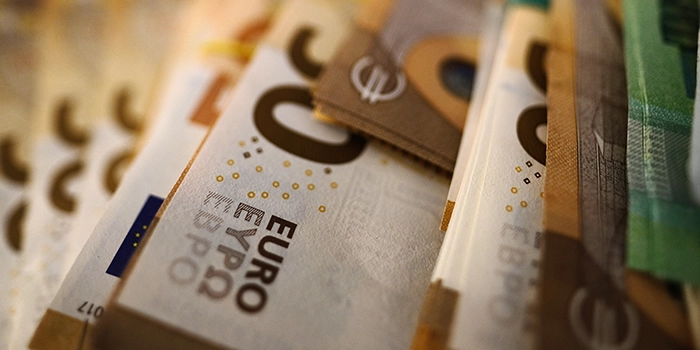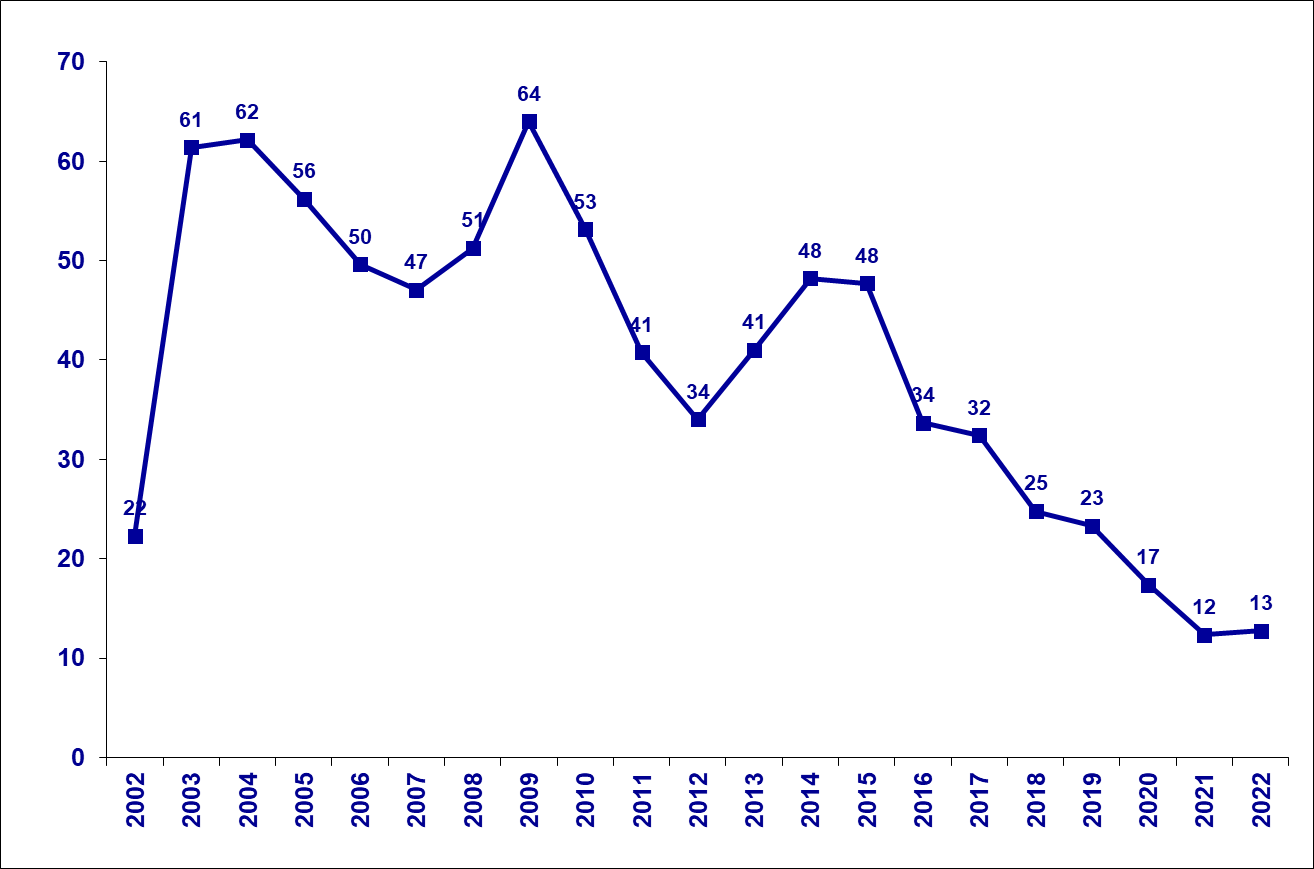
By the European Central Bank (ECB) ……
- 376,000 counterfeit euro banknotes withdrawn from circulation in 2022, second-lowest level ever in proportion to total banknotes in circulation
- Around two-thirds of withdrawn counterfeits were €20 and €50 banknotes
- Authenticity of euro banknotes verified using “feel, look, and tilt” method
* * *
Some 376,000 counterfeit euro banknotes were withdrawn from circulation in 2022. There is little likelihood of receiving a counterfeit, as the number of counterfeits remains very low in proportion to the number of genuine euro banknotes in circulation. In 2022, 13 counterfeits were detected per million genuine banknotes in circulation – the second-smallest proportion since the introduction of euro banknotes (see the chart below).
Despite this exceptionally small proportion, the number of counterfeits increased by 8.4% compared with 2021 (see Table 1), when the proportion of counterfeits was at its lowest since the euro was introduced. This increase also reflects the recovery of economic activity in 2022 after most coronavirus (COVID-19) restrictions had been lifted. €20 and €50 notes continued to be the most counterfeited banknotes, together accounting for slightly below two-thirds of the total (see Table 2). 96.6% of the counterfeits were found in euro-area countries, while 2.7% were found in non-euro-area European Union (EU) Member States and 0.7% in other parts of the world.
Most counterfeits are easy to detect as they have no security features or only very poor imitations of such features. The public does not need to be concerned about counterfeiting but should remain vigilant. Notes can be checked using the simple “feel, look, and tilt” method described on the dedicated security features webpage and on the websites of the euro-area national central banks. The Eurosystem also helps professional cash handlers by ensuring that successfully tested machines for handling and processing banknotes can reliably identify counterfeits and withdraw them from circulation.
Using counterfeits for payment is a criminal offense that may lead to prosecution. If you receive a suspicious banknote, compare it directly with one you know to be genuine. If your suspicions are confirmed, please contact the police or – depending on national practice – your national central bank or your own retail or commercial bank. The Eurosystem actively supports law enforcement agencies in their fight against currency counterfeiting.
Chart
Number of counterfeits detected annually per one million genuine notes in circulation

Table 1
Yearly figures in comparison

Table 2
Breakdown of counterfeits by denomination in 2022





